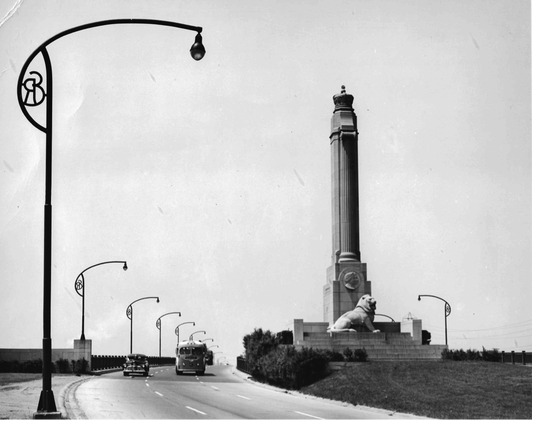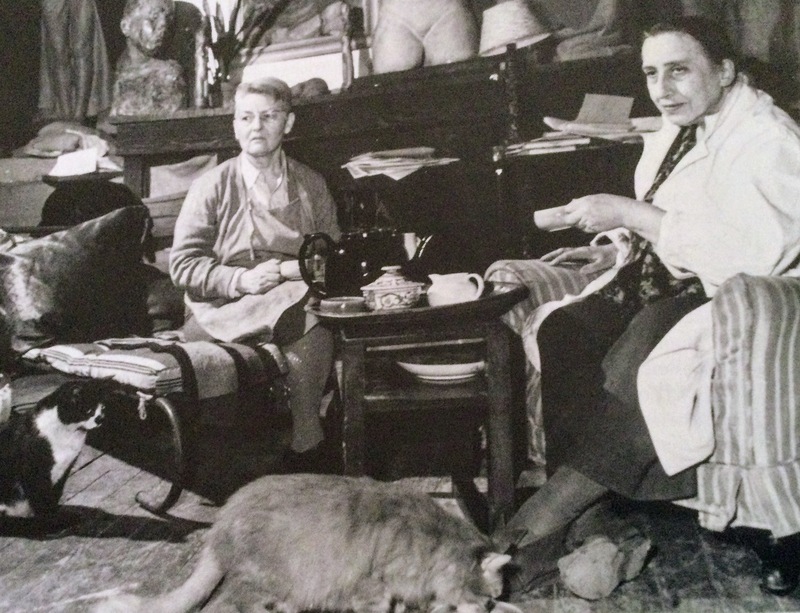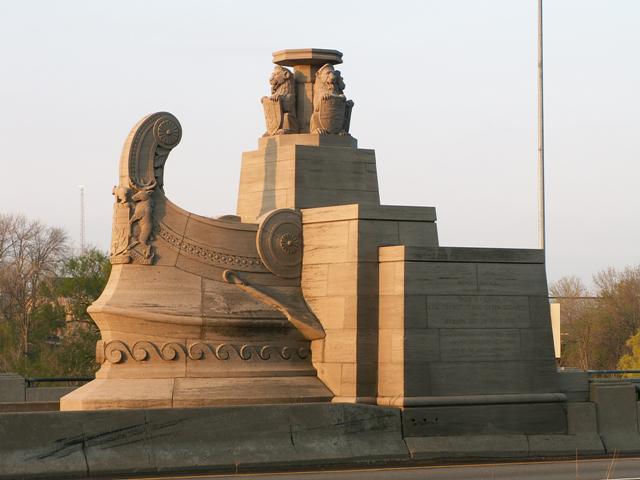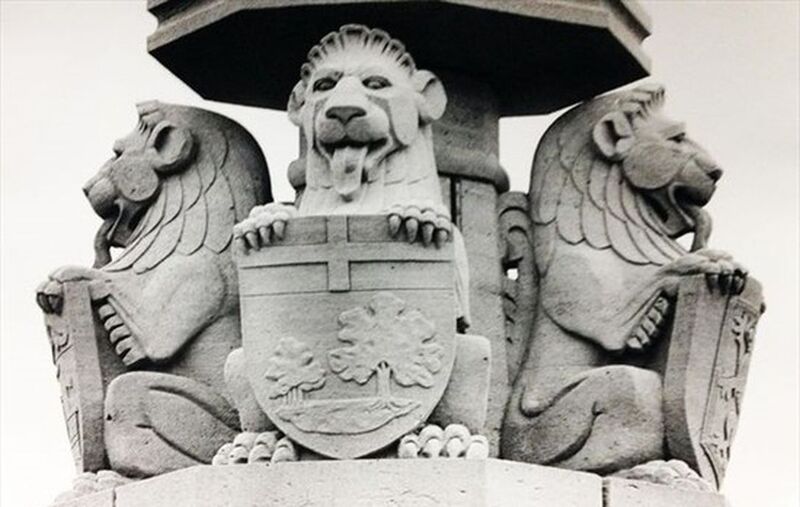Lions and Bridges
Thomas McQuesten wanted the highway to be beautiful. This was especially apparent at the three concrete and reinforced steel bridges. Each bridge was flanked by two pairs of Egyptian style concrete pylons which doubled as gates. MacQuestion hired landscape artists to design a plan for shrubbery along the embankments and median from Toronto to Bronte Creek.
The Lucky Lion at the Humber River
At the Toronto entrance to the Queen Elizabeth Highway at the Humber River, a $23,000 monument was built to commemorate the 1939 visit of the King and Queen. The monument had a large stone lion at the base and a vertical column with a crown on the top. This was designed by W.L. Summerville but sculptor Frances Loring was chosen to sculpt the lion. She began the project in 1939 and wanted the lion to reflect Britain's attitude at the beginning of the war. "Rising from a reclining position to fight," she said. There were problems encountered in hiring and maintaining a stone carver. Loring fired the man who was working on the lion because he wanted to make some adjustments to her design. She completed the job herself. Loring's fellow sculptor, Florence Wyle, modeled the crown on top.
Unfortunately, the lion wasn't destined to remain in its spot. The low hedges around the lion cast shadows that looked like pedestrians to drivers. This caused cars to brake and cause accidents. Some cars actually struck the column. It was decided in the mid 1970s that the monument would be moved to Sir Casimir Gzowski Park, east of the Humber River.
The Henley Bridge
The Henley Bridge was designed to represent a Viking ship. It was designed by the Bridge Office of the Department of Highways under Arthur Sedgewick. The monuments which are located at the ends were designed by architect, William Lyon Summerville. The crests of Canada's provinces were carved on the bridge and they were meant to represent unity, strength and progress. Somerville incorporated carvings by Francis Loring and Florence Wyle into the bridge.
The Credit River Bridge
This Art Deco bridge was slated for demolition. It was built in 1934 as part of the Queen Elizabeth Highway and its completion was marked by the visit of King George VI and Queen Elizabeth in 1939 as part of their tour. The bridge has been altered and revitalized, but the reconstruction was always done to match the appearance of the arch ribs which were created in 1934. This attention to detail was a factor in the bridge being designated as a heritage structure. The decision to demolish the bridge was reversed.




